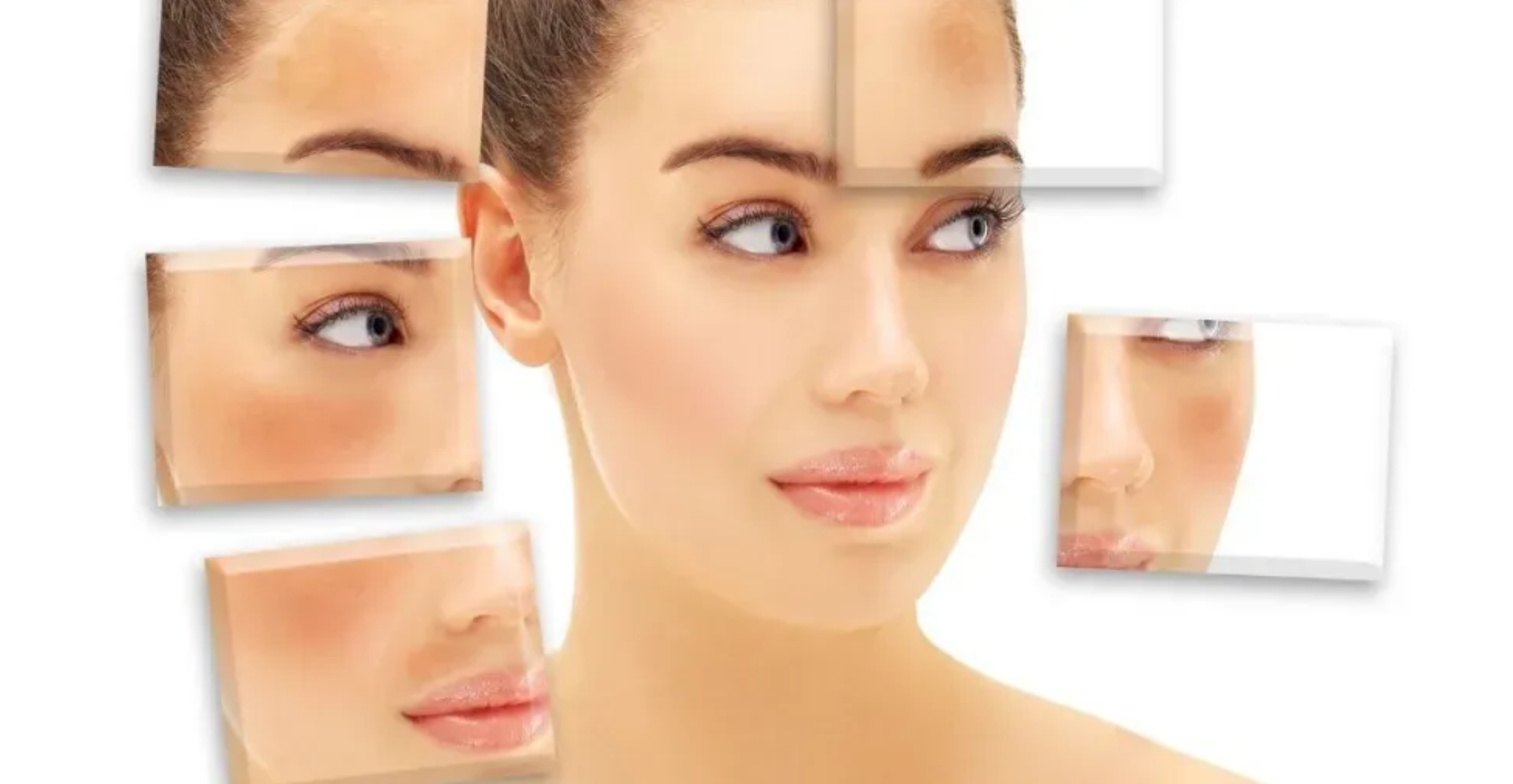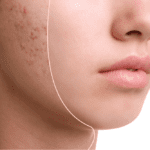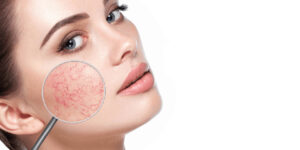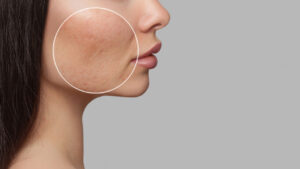How to treat skin pigmentation?
Pigmentation means coloring. Skin pigmentation disorders affect the color of your skin. Your skin gets its color from a pigment called melanin. Special cells in the skin make melanin. When these cells become damaged or unhealthy, it affects melanin production.
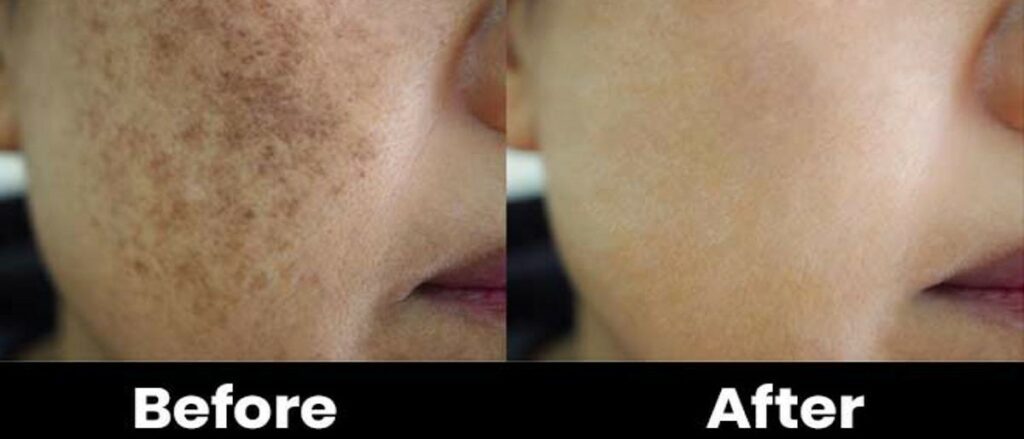
Pigmentation
Pigmentation refers to the coloring of the skin. Skin pigmentation disorders cause changes in the color of the skin. Melanin is made by cells in the skin and is the pigment responsible for your skin’s color.
Freckles and age spots are not a threat to human health, however, they cause aesthetic problems. Melanin is the pigment that produces the various shades and colors of human skin, hair, and eyes. Coloration (pigmentation) is determined by the amount of melanin in the skin. Without melanin, the skin would be pale white with shades of pink caused by blood flow through the skin. Fair-skinned people produce very little melanin, darker-skinned people produce moderate amounts, and very dark-skinned people produce the most.
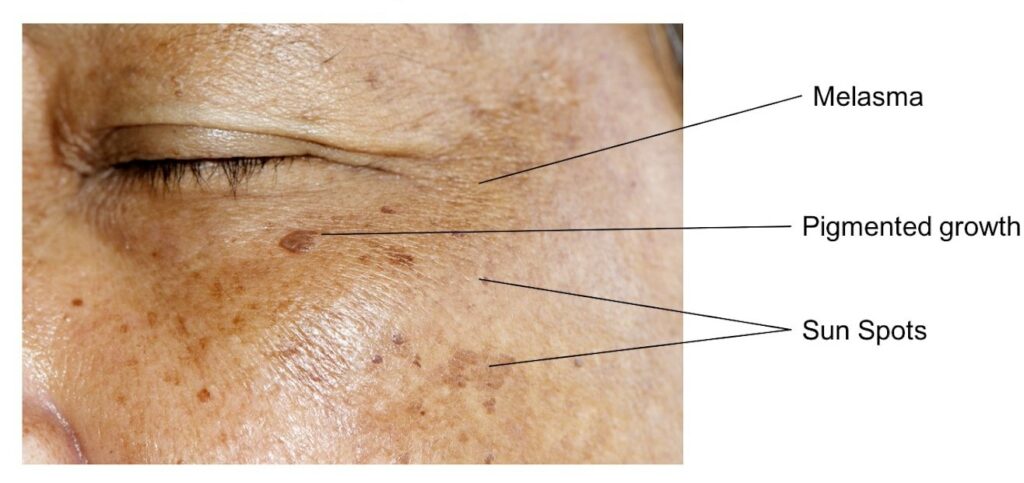
Causes of skin pigmentation
Skin pigmentation is caused by melanin – pigments of brown, yellow, and black colors. They are located in the cells of the basal layer of the epidermis and prevent the effects of UV radiation. The cause of skin pigmentation can be several:
- Beriberi – vitamin B12 regulates the production of pigment, and with a lack of B12 in the body, the skin begins to darken. Also, the darkening of the skin is affected by a lack of vitamins A and E.
- Blood stasis – provokes the accumulation of toxins in the body, which causes pigmentation on the skin.
- Slagging of the intestines, gallbladder dysfunction, kidney disease – contribute to the accumulation of decay products in the body
- Hormonal failure, and stress cause disruption of the work of many organs, including problems with the production of melanin.
When spots have a strong contrast with skin color, it is called hyperpigmentation – melanosis. A number of factors can trigger an increase in melanin production, but the main ones are sun exposure, hormonal influences, age, and skin injuries or inflammation.
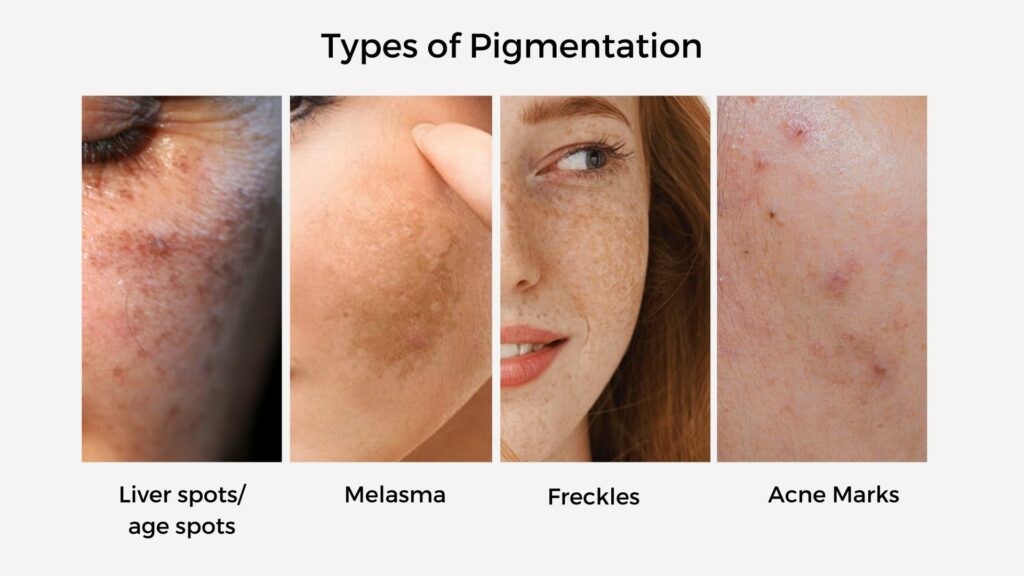
Description of pigment spots
Nevi – the most frequent benign hyper-pigmented skin lesions are melanocytic nevi, most commonly known as moles. These are benign proliferations of a type of melanocyte called nevus cells, which cluster as nests within the lower epidermis and dermis.
Lentigo (age spots) – are brown and dark brown skin pigmentations. Together with hyperpigmentation, keratosis appears, that is, a thickening of the stratum corneum. As a rule, spots appear on open areas of the body, which are most often exposed to solar radiation.
Vitiligo (piebald skin) – Vitiligo is an acquired pigmentary disorder, clinically characterized by depigmented macules caused by the destruction of melanocytes in the affected skin. Vitiligo can be caused for several reasons: failure of the immune system, stress, hereditary predisposition, and impaired function of internal secretion.
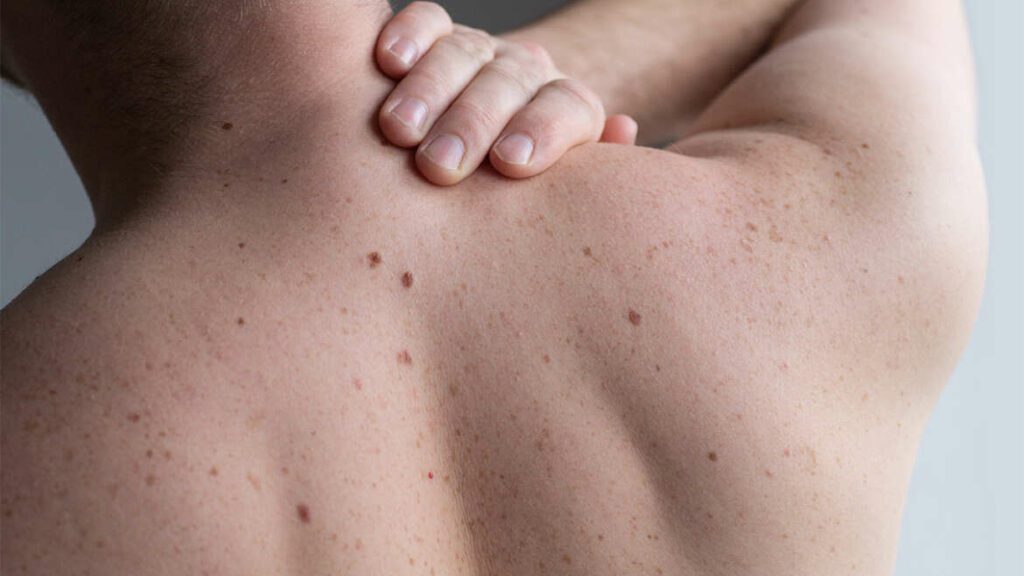
Sunspots are caused by prolonged exposure to the sun or improper tanning in a solarium. They appear most often on the décolleté, face, shoulders, and back.
Chloasma (pigmented spots during pregnancy) – limited skin pigmentation. A change in skin color appears during pregnancy. These are symmetrical spots of light brown or brown-black color. They usually appear on the face, around the nipples, and abdomen. Chloasma disappears within a few months after pregnancy or takes a long-term character.
Photosensitivity is a disease resulting in characteristic spots’ appearance. They can be caused by increased sensitivity to ultraviolet radiation, as well as the content of antibiotics and hormonal contraceptives in the body during active tanning. Photosensitivity can be caused by applying alcohol-based products to the skin (perfume, lotion, deodorant) before tanning.
Freckles are small brown spots on your skin, often in areas that get sun exposure. In most cases, freckles are harmless. They form as a result of the overproduction of melanin, which is responsible for skin and hair color (pigmentation). Pigmentation intensifies in the spring-summer period and disappears by the winter period. The first signs of freckles are already noticeable in childhood, at the age of 4-6 years.
Skin pigmentation treatment
Depending on the cause of your skin pigmentation, treatment may involve addressing an underlying medical condition or stopping a medication. There are several medical treatment options available if home remedies for pigmentation fail to give you the results you want. These include:
- Chemical peels
- Microneedling
- Lumecca IPL
- Morpheus8
- DiamondGlow facial
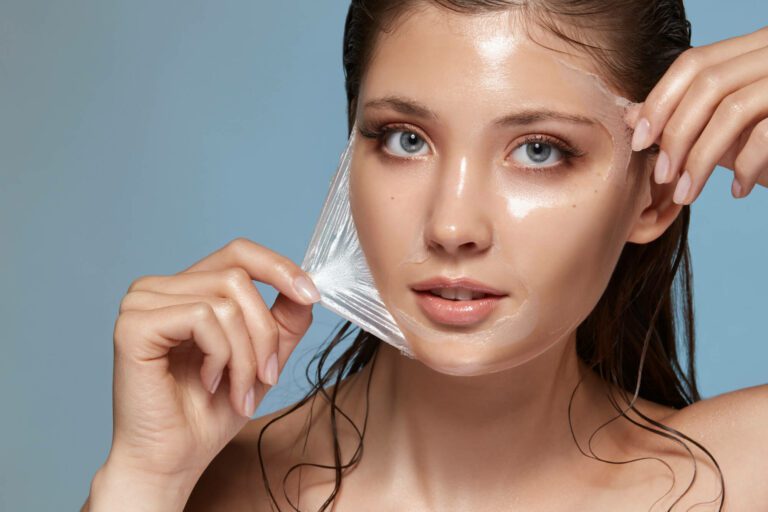
Skin pigmentation treatment via chemical peeling
Microneedling for skin pigmentation
A chemical peel is a procedure that removes the top layer of skin, which consists of dead or weakened cells.
With the help of peeling, you can noticeably rejuvenate the skin, and permanently get rid of hyperpigmentation.
For bleaching, a mixture of acids is used, the composition of which depends on the depth and type of peeling. This procedure is performed on the face, neck, chest, and arms. The result depends on the intensity of pigmentation and the individual properties of the patient’s skin.
Microneedling can help lighten these dark spots by encouraging your skin’s wound-healing response.
Microneedling involves piercing the skin with small sterile needles on an automated “pen” to create microscopic wounds. This triggers your skin’s wound-healing response, and after this, new, healthy skin can form that matches your normal skin tone. This reduces the appearance of dark spots.
This is called collagen induction therapy because the small injuries made to the skin cause surface which compels the body to start its healing process. Over a period of 10 to 14 days, new collagen is formed to cover up the injuries. This new layer of skin is free from any kind of spots or marks.
Dark spots of both the epidermis and the dermis layers of the skin can be reduced with the help of microneedling. The microneedling procedure requires 4 to 6 sessions with a gap of 4 to 8 weeks between each session. The skin starts responding after the first session itself and at the end of the whole procedure, your skin will be more rejuvenated, brighter, and lacking hyperpigmentation.
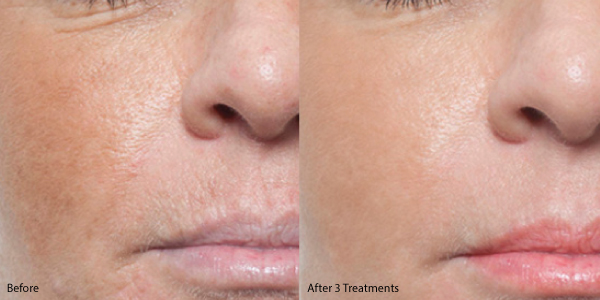
LUMECCA IPL to treat skin pigmentation
Pigmentation treatment via Morpheus8
This procedure is based on the technology of selective photothermolysis, which allows the treatment of pigmentation and the correction of skin defects in just 1-2 procedures.
The strongest combination of the optimal broadband spectrum with high peak power and high pulse repetition rate makes the LUMECCA IPL procedure the most powerful and effective IPL procedure on the market today. The LUMECCA pigmentation treatment is optimal for both light and dark skin types.
During the procedure, you will experience light thermal impulses that are comfortable and do not require additional anesthesia. During the procedure or after it, the pigment spot becomes darker, and after 1-2 weeks it peels off.
Morpheus8 corrects sun damage, eliminates dark spots, and improves overall skin tone. Morpheus8 delivers energy to the damaged superficial layers of the skin.
This helps to diminish hyperpigmented areas of the skin, such as areas showing signs of aging or sun damage. It also revitalizes your skin complexion, improves your skin’s radiance, skin tone, and texture, and helps to decrease your pore size.
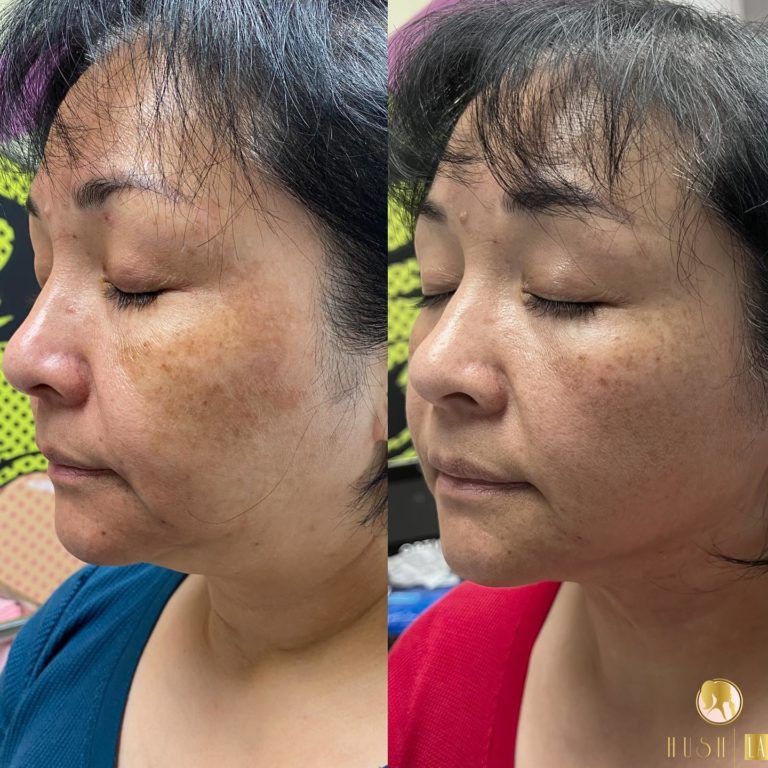
DiamondGlow facial treatment
DiamondGlow treatment instantly plumps up your skin to help you achieve a younger, refreshed look.
One-time treatments are ideal for deep cleaning your skin, clearing away pore-clogging debris and oils, and hydrating the deepest layers of your tissue. Treatments are quick ― usually 20 minutes or less ― and you can go right back to your regular activities without any downtime.
DiamondGlow treatment can address other common skin issues. Based on a customized treatment plan, you can use DiamondGlow treatment to reduce hyperpigmentation.

